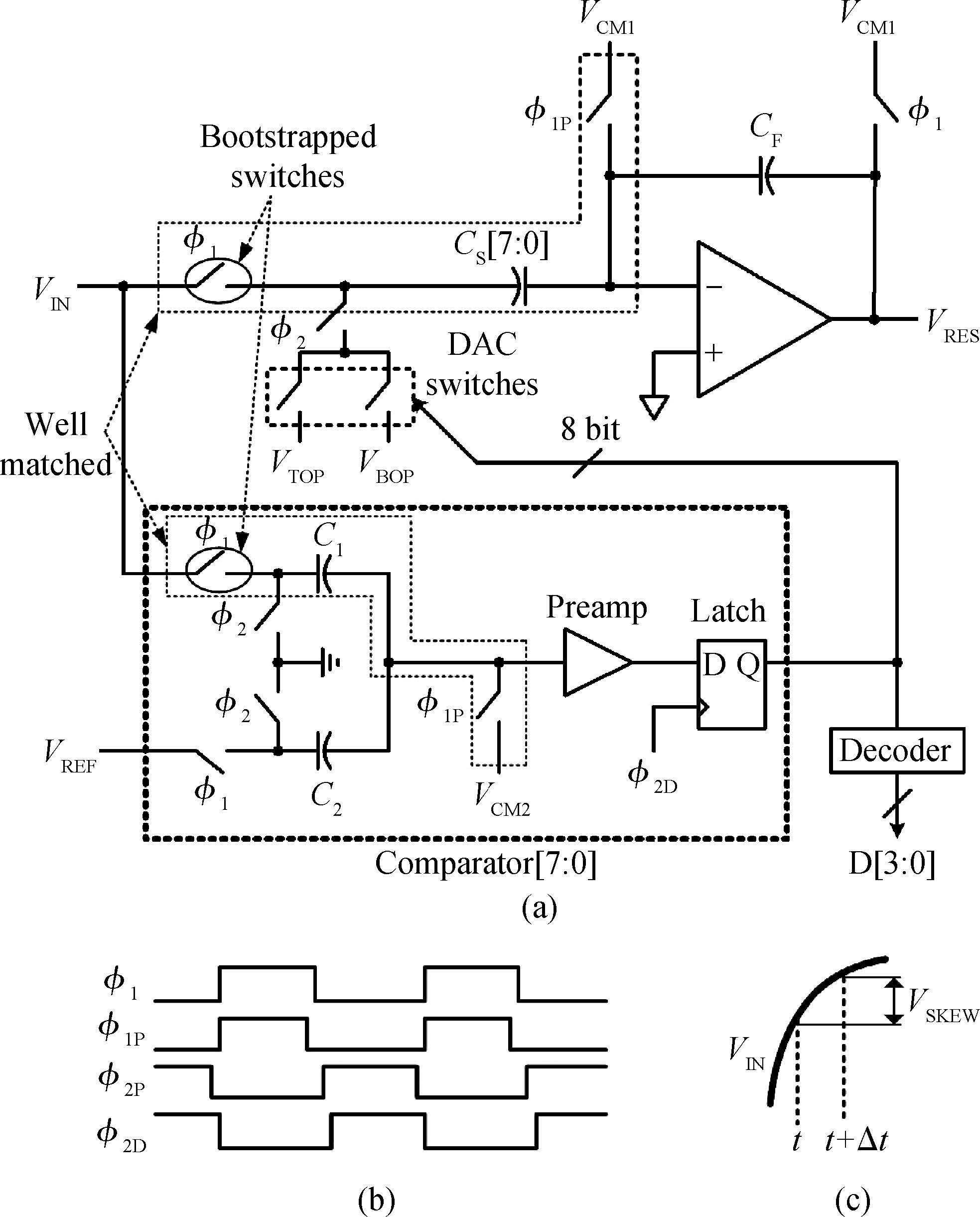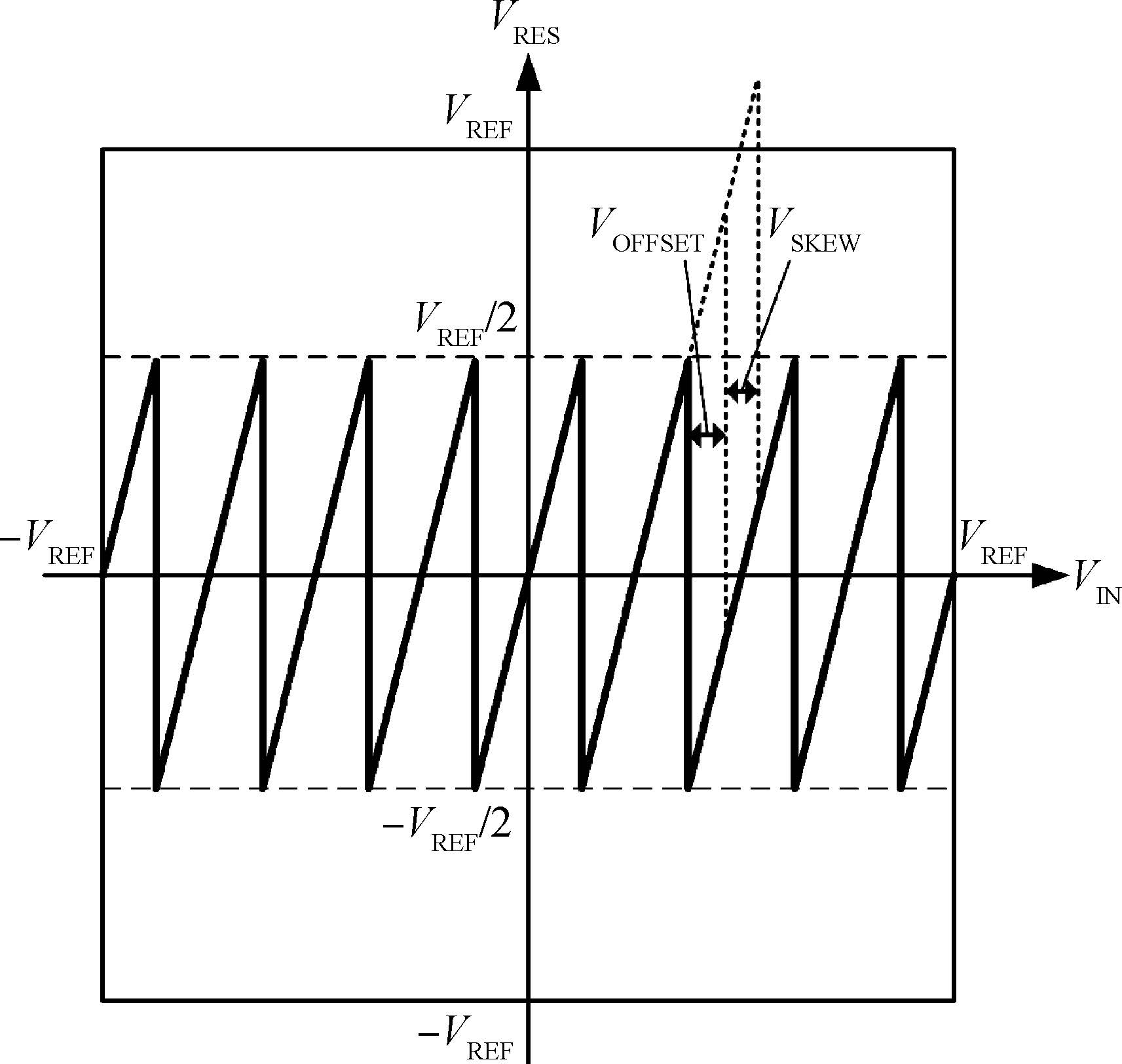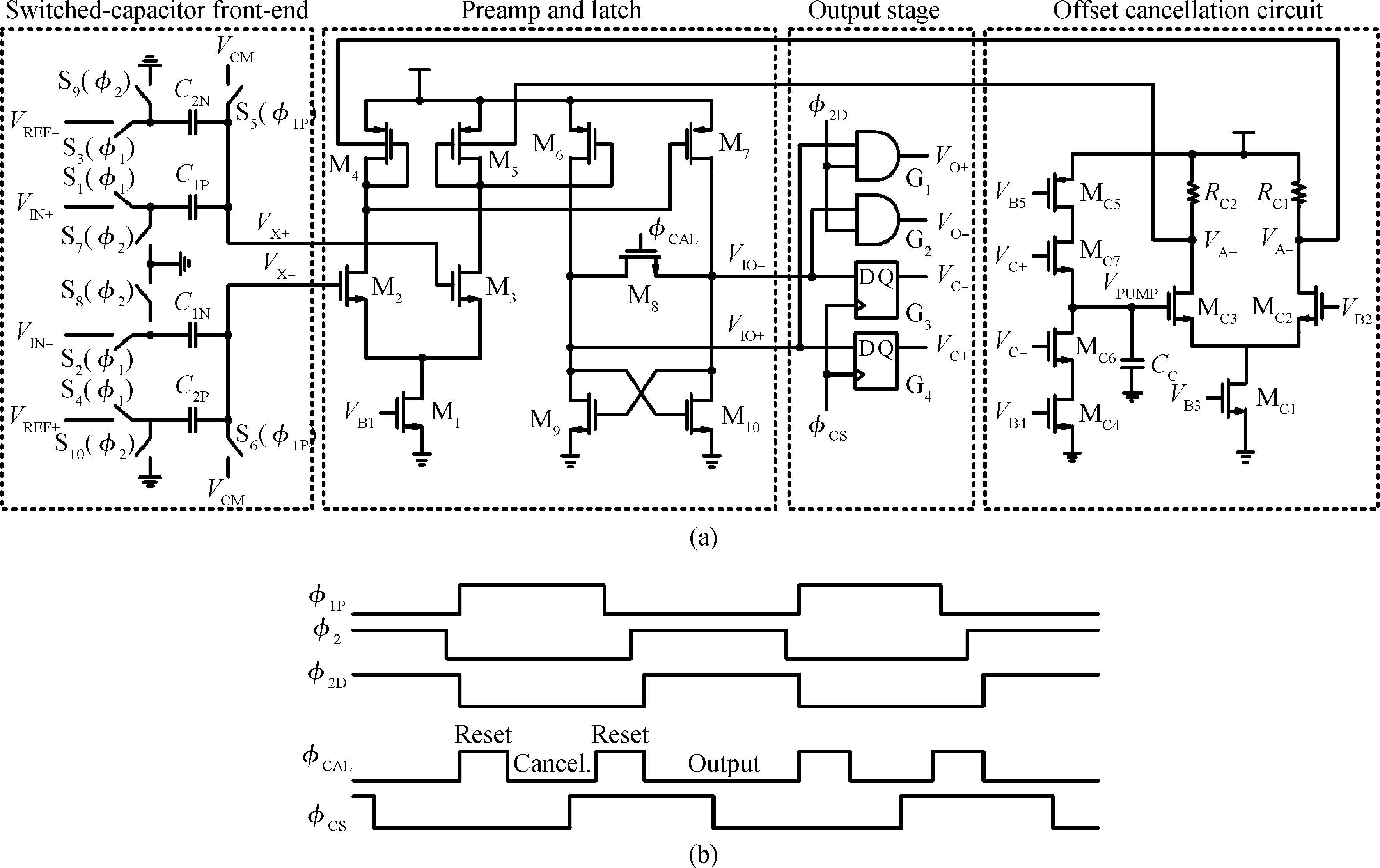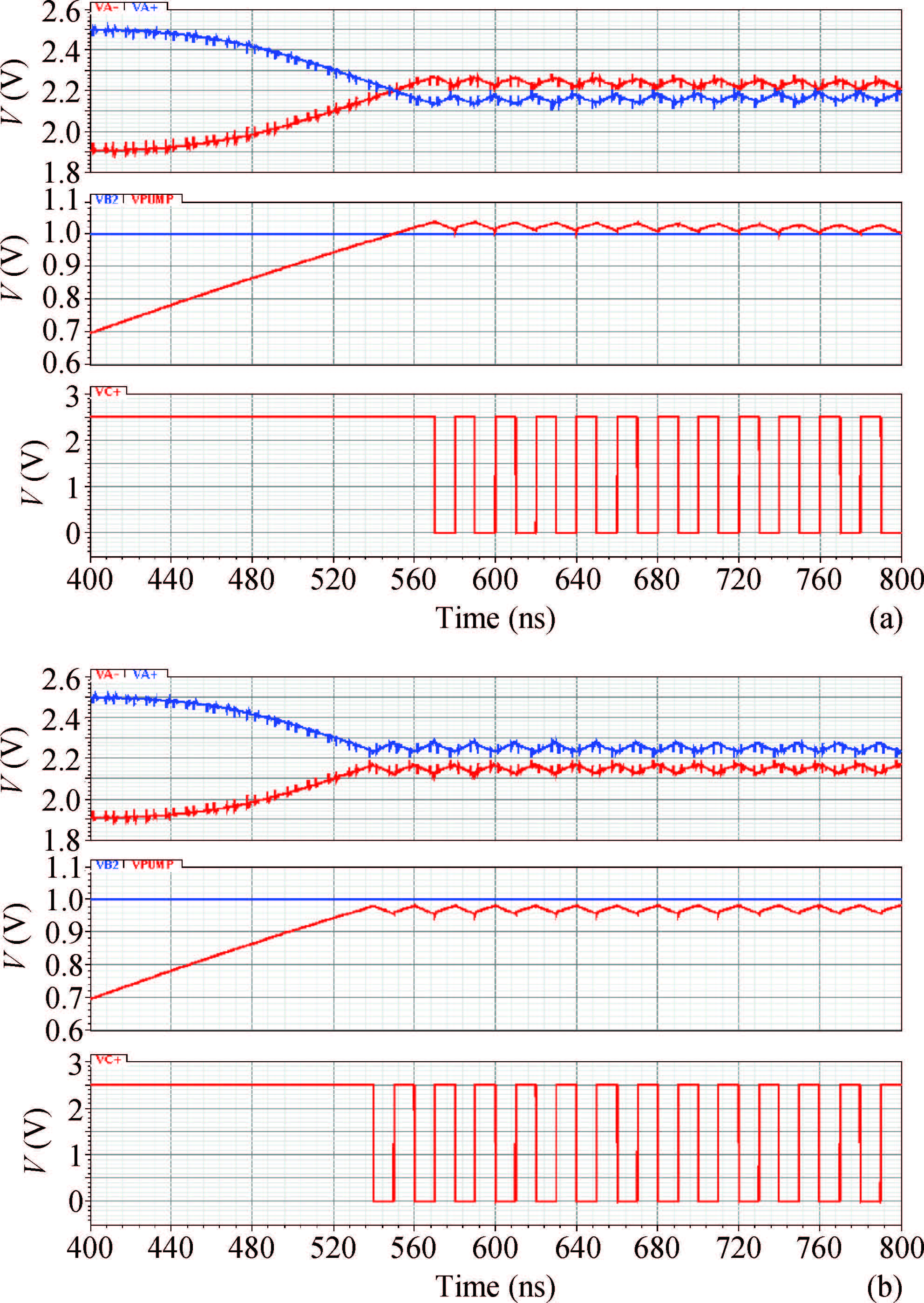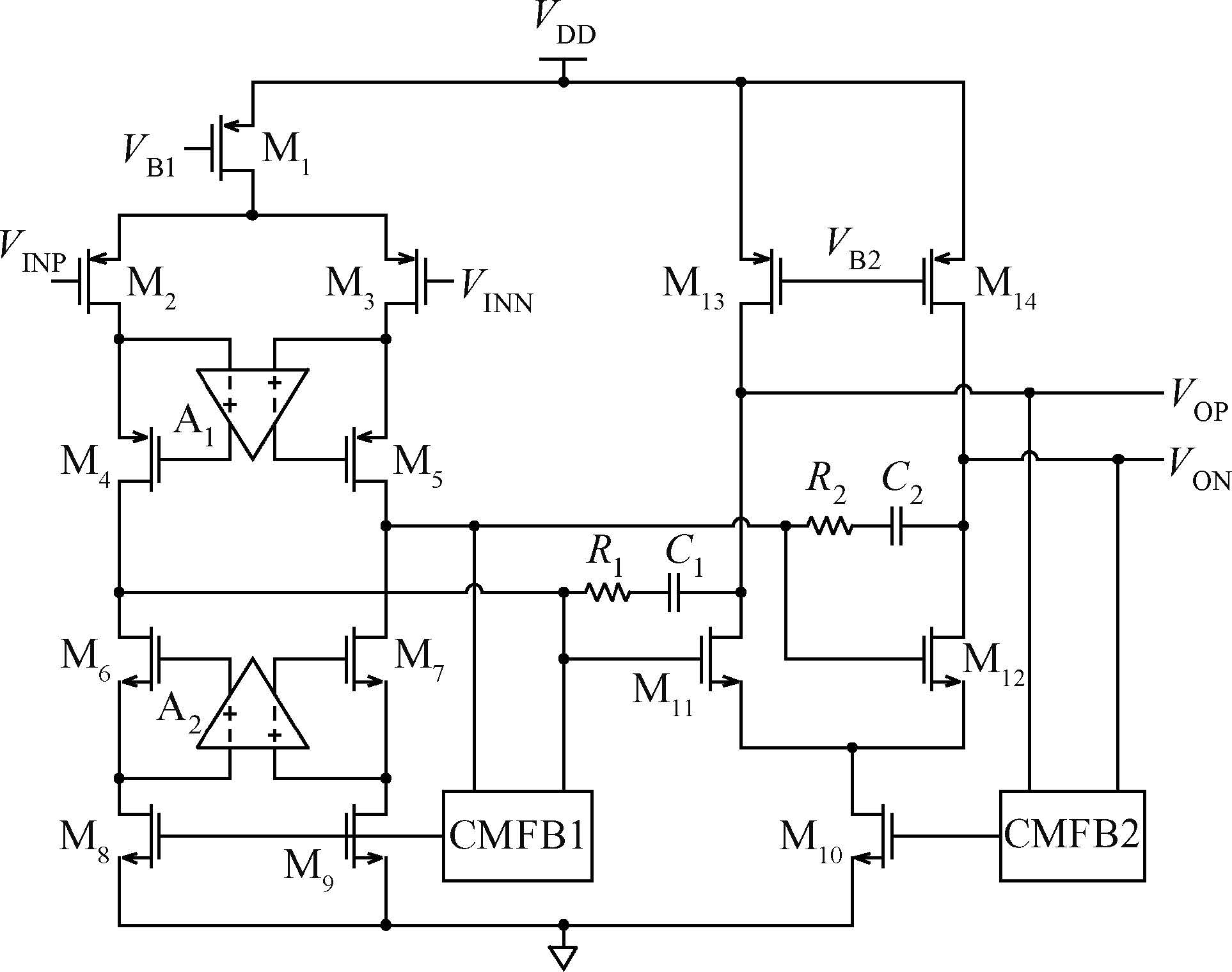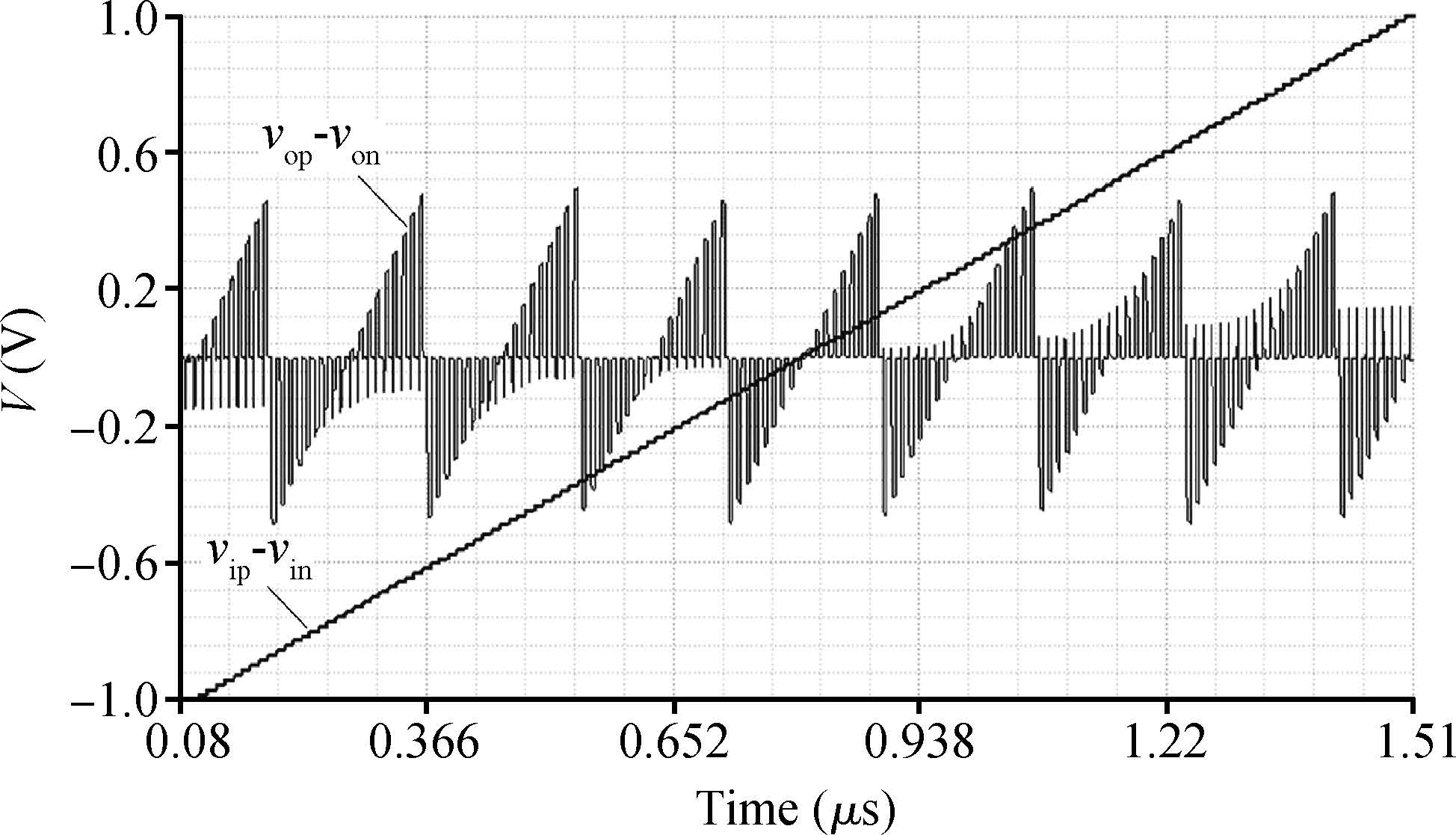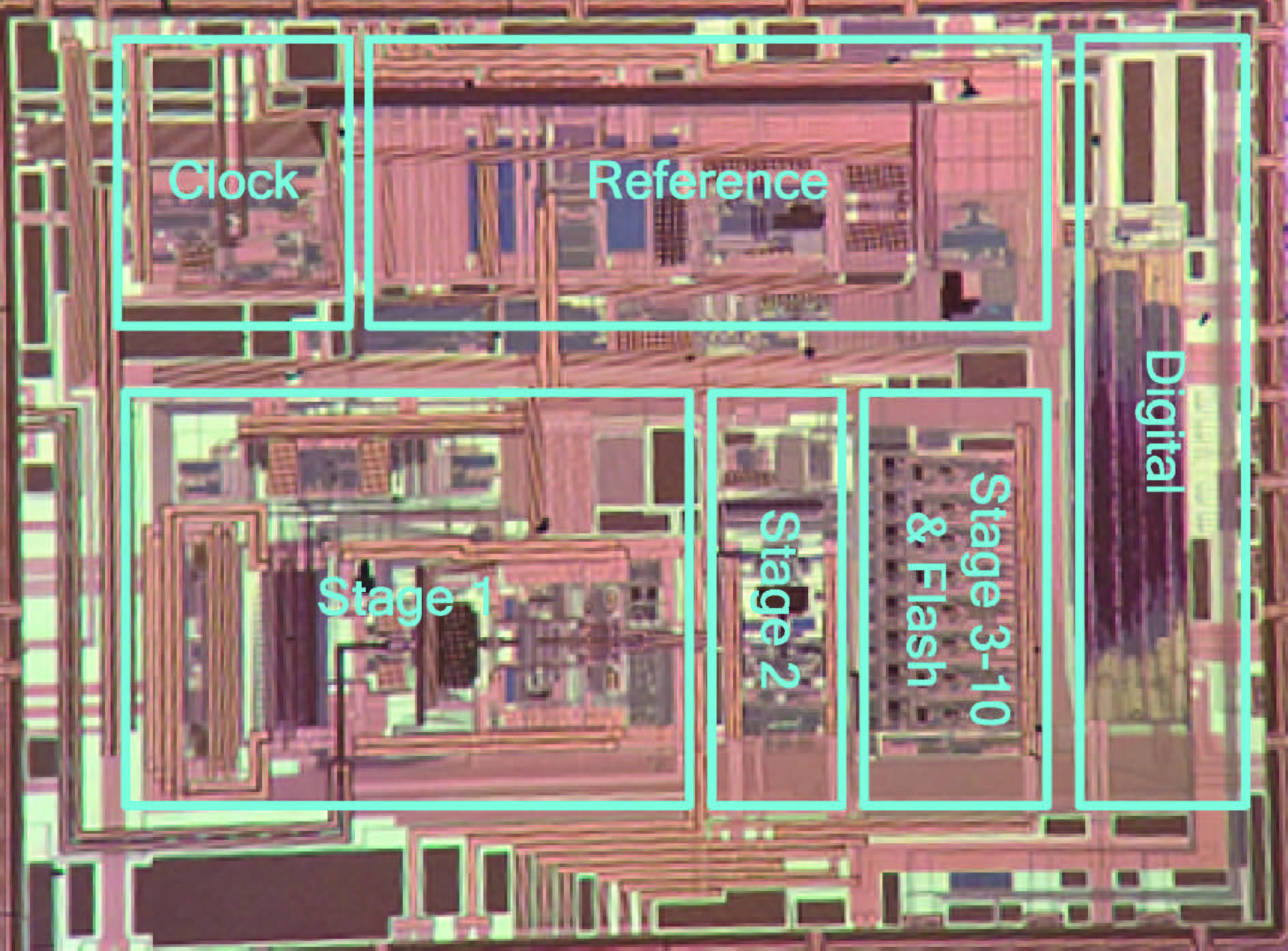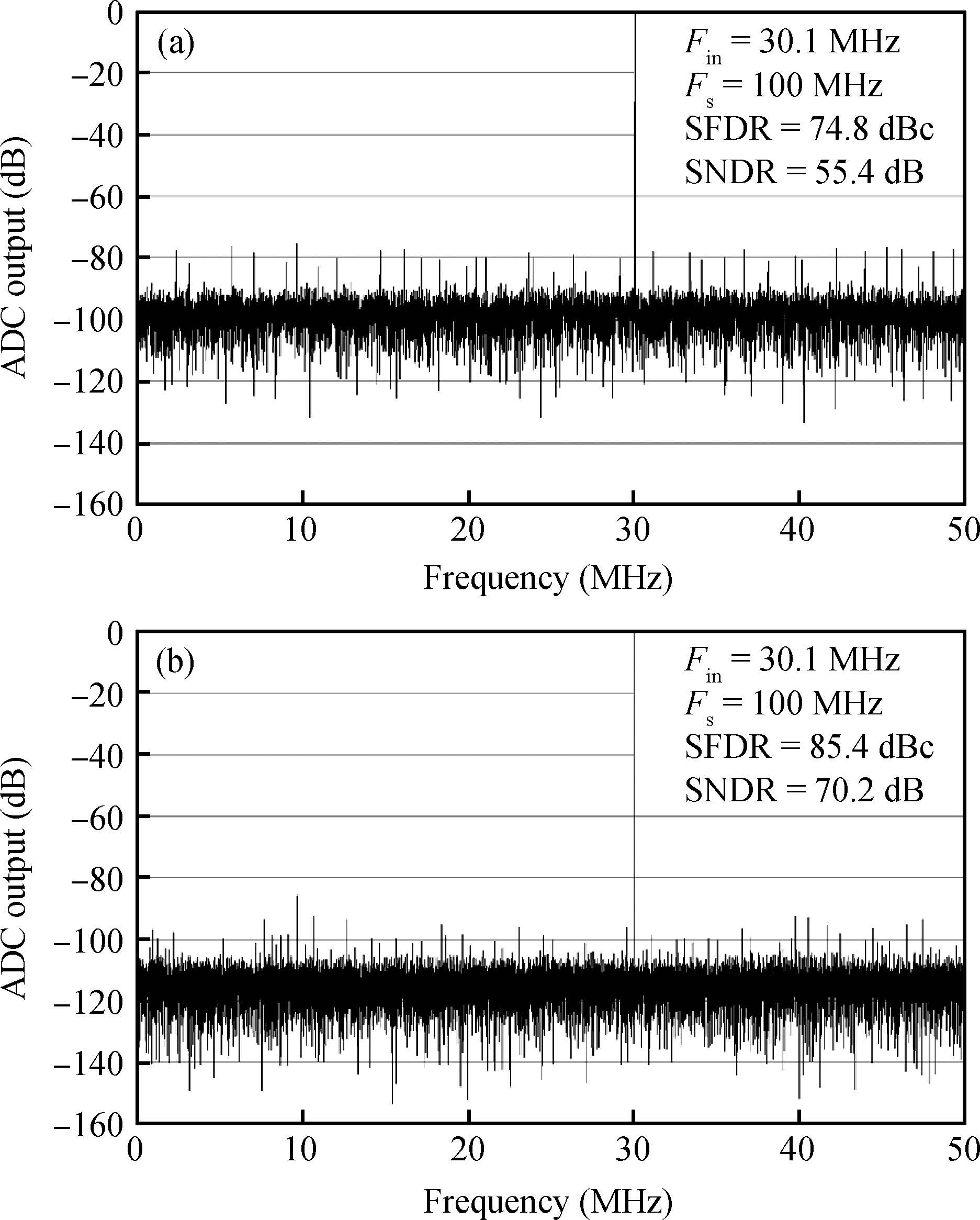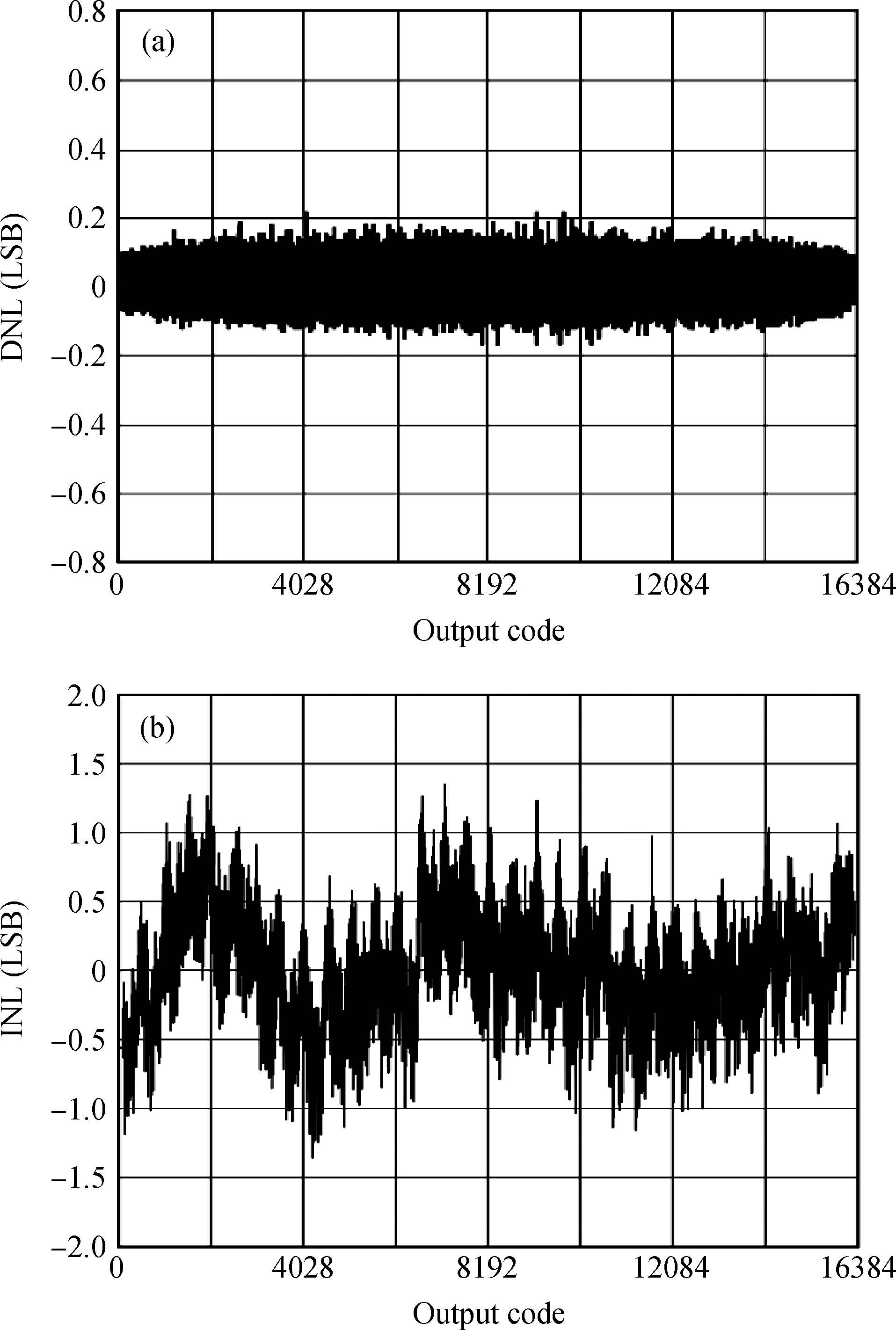| Citation: |
Xiaofei Wang, Hong Zhang, Jie Zhang, Xin Du, Yue Hao. A SHA-less 14-bit, 100-MS/s pipelined ADC with comparator offset cancellation in background[J]. Journal of Semiconductors, 2016, 37(3): 035002. doi: 10.1088/1674-4926/37/3/035002
****
X F Wang, H Zhang, J Zhang, X Du, Y Hao. A SHA-less 14-bit, 100-MS/s pipelined ADC with comparator offset cancellation in background[J]. J. Semicond., 2016, 37(3): 035002. doi: 10.1088/1674-4926/37/3/035002.
|
A SHA-less 14-bit, 100-MS/s pipelined ADC with comparator offset cancellation in background
DOI: 10.1088/1674-4926/37/3/035002
More Information
-
Abstract
A 14-bit 100-MS/s pipelined analog-to-digital converter(ADC) without dedicated front-end sample-and-hold amplifier(SHA) is presented. In addition to elaborate matching of the sampling network in the first stage, a background offset cancellation circuit is proposed in this paper to suppress the offset of the comparators in the first-stage sub-ADC, which ensures the overall offset does not exceed the correction range of the built-in redundant structure. Fabricated in a 0.18-μm CMOS technology, the presented ADC occupies a chip area of 12 mm2, and consumes 237 mW from a 1.8-V power supply. Measurement results with a 30.1-MHz input sine wave under a sampling rate of 100 MS/s show that the ADC achieves a 71-dB signal-to-noise and distortion ratio(SNDR), an 85.4-dB spurious-free dynamic range(SFDR), a maximum differential nonlinearity(DNL) of 0.22 LSB and a maximum integral nonlinearity(INL) of 1.4 LSB.-
Keywords:
- SHA-less,
- pipelined ADC,
- clock skew,
- comparator offset,
- background
-
References
[1] [2] [3] [4] [5] [6] [7] [8] [9] [10] -
Proportional views





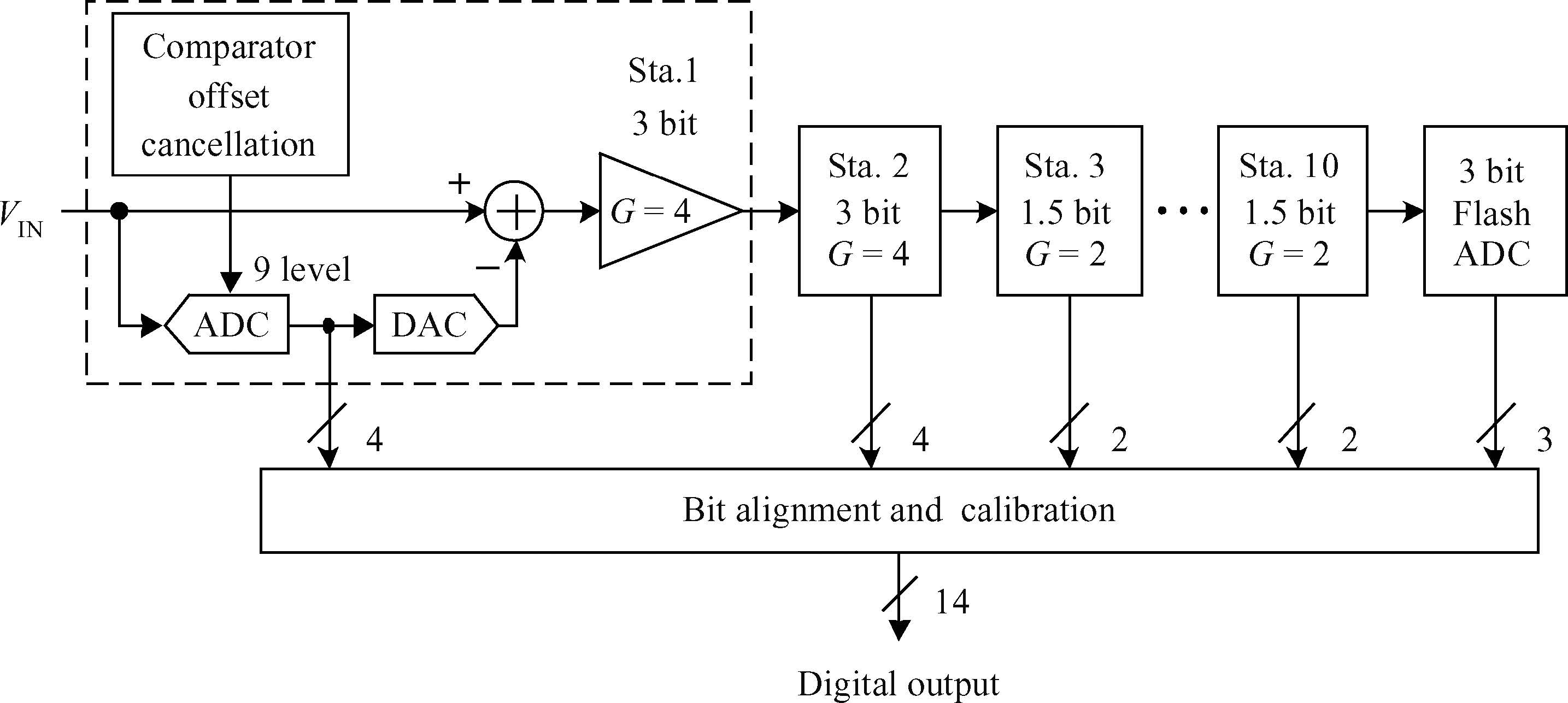
 DownLoad:
DownLoad:
